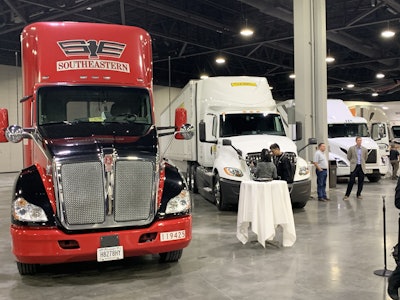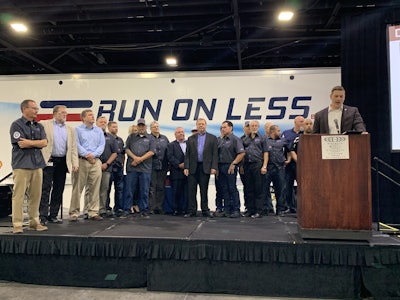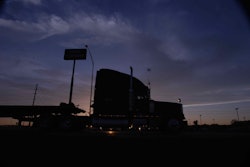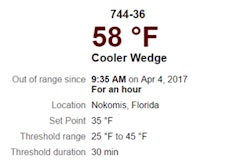

The results of the exercise were announced Sunday at the North American Commercial Vehicle (NACV) Show in Atlanta.
Nine diesel trucks from C&S Wholesale Grocers, Hirschbach, Hogan Transportation, J.B. Hunt, Meijer, PepsiCo, Ploger Transportation, Schneider, Southeastern Freight Lines, and one CNG tractor from UPS, saved 2,750 gallons of fuel – the equivalent of $8,249 – and 27.9 tons of carbon dioxide over the course of 18 days. NACFE Executive Director Mike Roeth noted if all regional carriers reached the 8.3 MPG benchmark, annualized potential savings could top $9 billion and eliminate more than 30 million tons of CO2.
The trucks covered 58,633 miles over 135 driving days. Payload averaged 22,198 pounds, yielding 93 ton-miles per gallon at an average speed of 55 MPH.
NACFE focused this year’s Run on regional haul operations to show that a combination of commercially available technology and skilled drivers can achieve MPGs far above those of the average fleet. The 10 trucks operated within 300 miles of their home base in hub and spoke, dedicated and multi-stop routes and faced numerous real-world challenges including traffic congestion, construction, operating in urban environments and traveling secondary roads.
Some of the trucks operated in two shifts per day, possibly in differing duty cycles, and there was one natural gas truck, which has lower inherent efficiency. NACFE also learned that because of the diversity of duty cycles, the equipment has a very utilitarian design, which challenges optimization. Despite those challenges, using commercially available technologies these trucks demonstrated that it is possible to operate in a fuel-efficient manner in real-world regional haul operations.
Over the course of Run on Less, Roeth said NACFE discovered that high-efficiency requires a commitment from both fleet leadership and drivers. Among other discoveries, he said, were:
• big data and connectivity can be used to further optimize for each route
• diversity in duty cycles makes it essential that fleet managers understand the nuances of their business so they can spec vehicles properly and coach drivers in efficient driving techniques
• the expansion of regional haul will help attract and retain drivers as drivers get home on a more regular basis
• because of its return-to-base operation, regional haul is ideal for alternative-fuel vehicles, especially battery electric trucks.
One surprise finding, Roeth said, was the positive impact these carriers see from aerodynamic devices.
“One of the things we kind of myth busted was that aerodynamics don’t work on regional trucks,” he said, “that there’s no benefit under 50 miles per hour.”
Throughout the Run, the three Freightliners, two Internationals, two Kenworths, one Peterbilt, and two Volvos, piloted by drivers Louis Scaruffi, Mark Casey, Glen Williams, Dustin Whitener, Rita Bare, Lou Martinez, Travis Lauer, Michael Tam, Beau White, and Darin Salgado, were monitored by devices installed by Geotab and by data loggers from the National Renewable Energy Laboratory. Speed, load, elevation changes, number of stops, and weather were monitored during the three weeks of the Run. Shell was title sponsor for the Run, and a host of other companies were event sponsors and supporters.
This year’s regional Run follows a cross-country long-haul fuel efficiency demonstration, which in 2017 achieved a cumulative average of 10.1 mpg during 99 days of driving.











